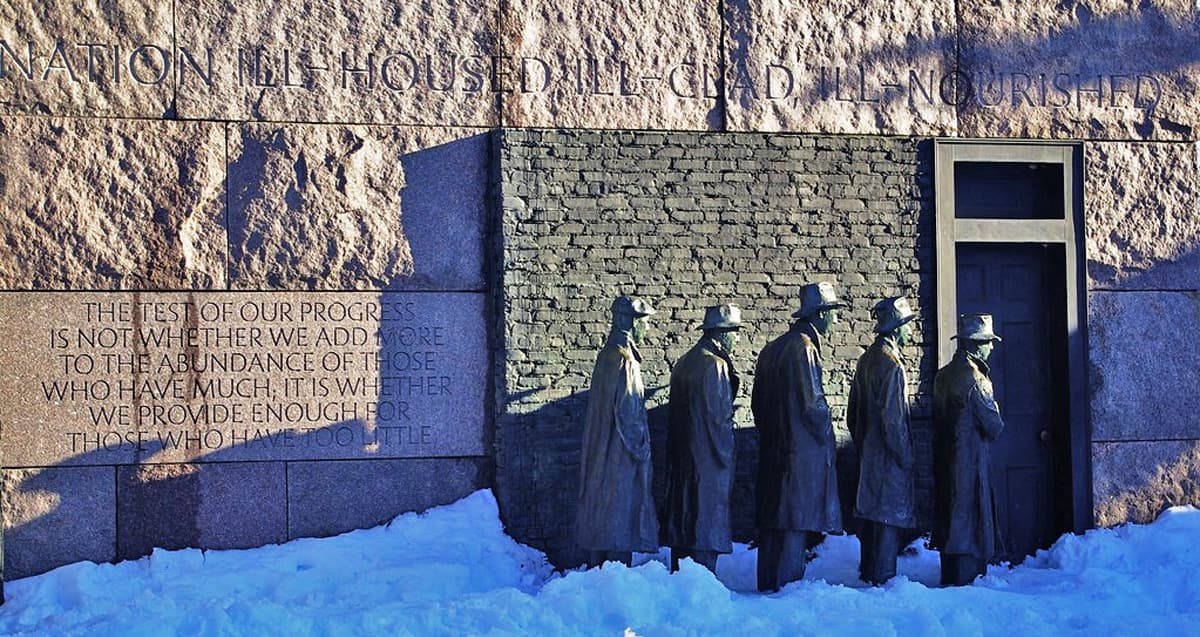Maryland Faces Economic Crossroads with Federal Job Losses, Infrastructure Challenges, and Healthcare Cost Increases
TL;DR
Maryland's leading federal job losses create opportunities for businesses to recruit skilled workers while the state focuses on quantum computing as a competitive economic advantage.
Maryland faces systematic challenges including 15,100 federal job losses since January, a $9.5 billion Purple Line project five years delayed, and 13.4% health insurance premium increases for 2026.
Maryland addresses critical infrastructure needs through school repairs, bridge reconstruction, and public transit development while ensuring healthcare access despite premium increases.
Maryland leads in federal job losses while pursuing quantum computing growth and battling dollar store expansion, creating a complex economic landscape worth watching.
Found this article helpful?
Share it with your network and spread the knowledge!

Maryland has experienced the most significant federal job losses in the nation since January, with 15,100 positions eliminated according to data from the Maryland Department of Labor. The state lost another 2,500 federal jobs in August, marking the second consecutive month that Maryland has led the country in this concerning trend. These job reductions represent a substantial economic shift for a state that has historically benefited from its proximity to the federal government.
The Purple Line light rail project continues to face significant challenges, now projected to open five years behind schedule with costs nearly $4 billion over original estimates. The 16-mile, 21-station project connecting Montgomery and Prince George's counties will not begin operation until late 2027 at an estimated construction cost of $5.6 billion. The total project cost, including operations, has reached $9.5 billion compared to initial projections, with delays attributed to court cases, contractor changes, and pandemic-related disruptions.
Maryland's public school infrastructure faces critical challenges, with a new report from the state comptroller indicating that the vast majority of school facilities require repairs or are functionally unreliable. The assessment comes amid skyrocketing construction costs that complicate addressing these infrastructure deficiencies. Meanwhile, the termination of the National Blue Ribbon Schools program has disappointed Maryland educators, particularly those at the ten schools that received the honor last year.
Healthcare costs are set to rise significantly for nearly 300,000 Maryland residents who purchase insurance through the state's Affordable Care Act Marketplace. The Maryland Insurance Administration approved a 13.4% average premium rate increase for 2026, though this represents a reduction from the 17% hike initially proposed by insurance companies. Insurers attribute the increase to the elimination of federal premium tax credits in recent congressional spending legislation.
Governor Wes Moore continues to promote quantum computing as a key economic development opportunity, describing it as a lighthouse industry that could drive future growth. The governor's economic development strategy focuses on emerging technologies while the state works to address infrastructure challenges, including the Francis Scott Key Bridge replacement project projected to cost $1.8 billion with a 2028 completion target.
The Maryland housing market shows signs of slowing, with data from the Maryland Association of Realtors indicating decreased home sales in densely populated areas including Baltimore City, Montgomery, Howard and Prince George's counties. Baltimore City officials are simultaneously addressing the proliferation of dollar stores through proposed zoning regulations that would require conditional use approval for new small box retail establishments.
Healthcare officials have responded to federal vaccination guidance confusion by issuing a blanket prescription for COVID-19 vaccines, ensuring residents can access shots without individual provider prescriptions. The state's approach contrasts with federal advisers who declined to make specific recommendations for this fall's vaccinations.
Curated from citybiz

